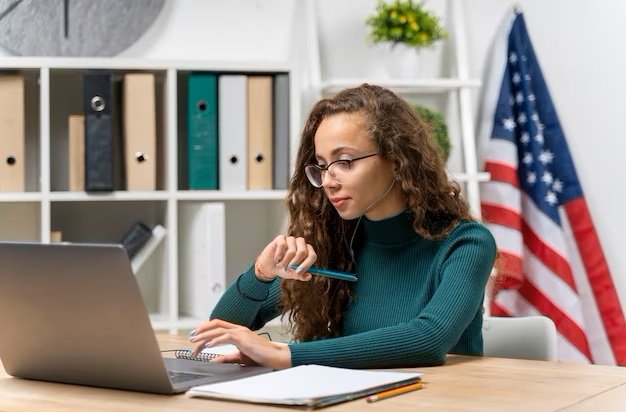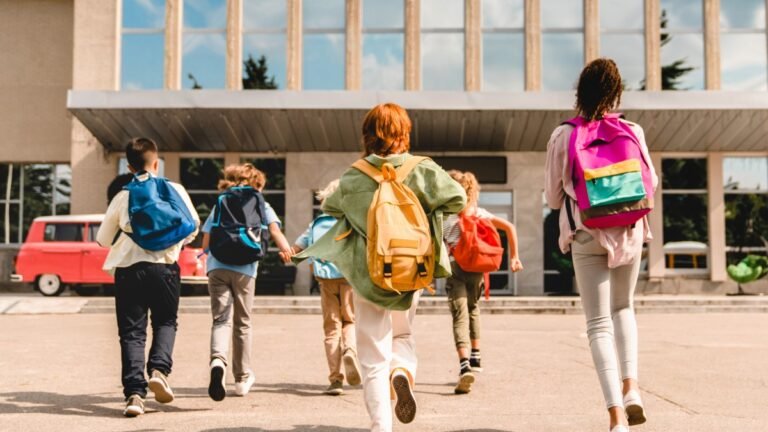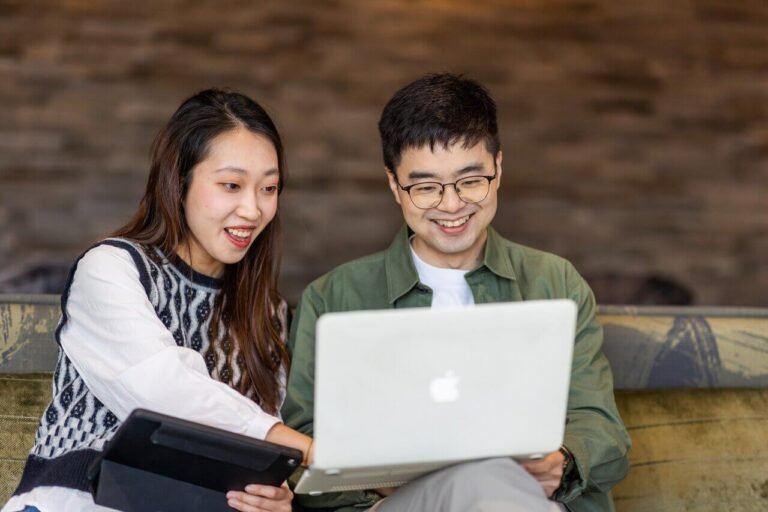The Step-by-Step Process of Obtaining a Student Visa for the USA
When it comes to studying in the United States, there are several different types of student visas to consider. The most common type is the F-1 visa, which is for academic students who are enrolled in a full-time program at an accredited educational institution. This visa allows students to stay in the U.S. for the duration of their program, and also provides the option to work on campus. Another type of student visa is the M-1 visa, which is for vocational or non-academic students who are enrolled in a full-time program at an accredited vocational or nonacademic institution. This visa also allows students to stay in the U.S. for the duration of their program, but does not provide the option to work on campus.
In addition to these two main types of student visas, there are also several other visa categories that may be applicable to certain students, such as the J-1 visa for exchange visitors, and the H-3 visa for trainees. It’s important for students to carefully consider their specific situation and needs when choosing a visa type, as each type has its own requirements and restrictions. Understanding the different student visa types is an important first step in the process of studying in the U.S., and can help students make informed decisions about their educational and immigration options.
Researching and Applying to SEVP-Certified Schools
Once students have a better understanding of the different student visa types, the next step is to research and apply to SEVP-certified schools. The Student and Exchange Visitor Program (SEVP) is a government program that certifies schools and programs to enroll nonimmigrant students. It’s important for students to choose a school that is SEVP-certified, as this is a requirement for obtaining a student visa. There are thousands of SEVP-certified schools in the U.S., ranging from large universities to small colleges and vocational schools.
When researching schools, students should consider factors such as location, program offerings, tuition costs, and campus resources. It’s also important to carefully review the admissions requirements and application process for each school, as these can vary significantly from one institution to another. Once students have identified several potential schools, they can begin the application process, which typically involves submitting an application form, academic transcripts, letters of recommendation, and standardized test scores. Some schools may also require a personal statement or interview as part of the application process. By carefully researching and applying to SEVP-certified schools, students can increase their chances of being accepted to a program that meets their academic and immigration needs.
Completing the Form DS-160
After being accepted to a SEVP-certified school, the next step in the student visa process is to complete the Form DS-160. This form is an online nonimmigrant visa application that is used by individuals applying for a visa to travel to the U.S. The DS-160 collects information about the applicant’s background, travel history, and purpose of travel, and is used by consular officers to determine eligibility for a visa. The form must be completed and submitted online through the U.S. Department of State’s Consular Electronic Application Center (CEAC) website.
When completing the DS-160, it’s important for students to provide accurate and truthful information, as any false or misleading information could result in a visa denial. The form also requires applicants to upload a digital photograph of themselves that meets specific requirements, such as size, format, and background color. Once the form has been completed and submitted, applicants will receive a confirmation page with a barcode that must be printed and brought to the visa interview. It’s important for students to carefully review and double-check their DS-160 before submitting it, as any errors or omissions could delay the visa application process.
Paying the SEVIS Fee
In addition to completing the DS-160, students applying for a student visa must also pay the SEVIS fee. The Student and Exchange Visitor Information System (SEVIS) fee is a mandatory fee that is required for all F and M visa applicants, and is used to fund the SEVIS program and maintain accurate records of nonimmigrant students and exchange visitors. The fee must be paid at least three days before the visa interview, and can be paid online through the SEVIS website using a credit card or other accepted payment methods.
The amount of the SEVIS fee varies depending on the type of visa being applied for, with F-1 visa applicants typically paying a higher fee than M-1 visa applicants. Once the fee has been paid, applicants will receive a confirmation receipt that must be brought to the visa interview as proof of payment. It’s important for students to pay the SEVIS fee in a timely manner, as failure to do so could result in delays or denial of the visa application. By carefully following the instructions for paying the SEVIS fee, students can ensure that this important step in the visa application process is completed successfully.
Scheduling and Attending a Visa Interview
After completing the DS-160 and paying the SEVIS fee, the next step in the student visa process is to schedule and attend a visa interview at a U.S. embassy or consulate. The purpose of the interview is for consular officers to assess the applicant’s eligibility for a student visa based on their academic intentions, ties to their home country, and ability to support themselves financially while studying in the U.S. The interview is a critical step in the visa application process, and it’s important for students to be well-prepared and present themselves professionally.
To schedule a visa interview, students must visit the website of the U.S. embassy or consulate where they will be applying for their visa, and follow the instructions for scheduling an appointment. It’s important for students to schedule their interview as early as possible, as appointment availability can vary depending on location and time of year. On the day of the interview, students should arrive early and bring all required documentation, including their passport, confirmation page from the DS-160, confirmation receipt for the SEVIS fee, and any additional supporting documents requested by the embassy or consulate. By carefully preparing for and attending their visa interview, students can increase their chances of being approved for a student visa.
Gathering Required Documentation
In addition to completing the DS-160 and paying the SEVIS fee, students applying for a student visa must also gather required documentation to bring to their visa interview. This documentation typically includes a valid passport, confirmation page from the DS-160, confirmation receipt for the SEVIS fee, academic transcripts from their SEVP-certified school, proof of financial support (such as bank statements or scholarship letters), and any additional supporting documents requested by the embassy or consulate. It’s important for students to carefully review the specific documentation requirements for their visa interview location, as these can vary depending on location and individual circumstances.
In some cases, consular officers may request additional documentation during the interview process, such as proof of ties to their home country or intent to return after completing their studies in the U.S. It’s important for students to be prepared to provide any requested documentation in a timely manner, as failure to do so could result in delays or denial of the visa application. By carefully gathering all required documentation and being prepared to provide additional information if requested, students can ensure that they are well-prepared for their visa interview.
Understanding Visa Denials and Reapplying
Despite careful preparation and adherence to all requirements, some students may experience a denial of their student visa application. Visa denials can occur for a variety of reasons, such as insufficient ties to their home country, inability to demonstrate financial support, or concerns about their intentions while in the U.S. If a student’s visa application is denied, it’s important for them to carefully review the reasons for denial provided by the consular officer, and consider whether there are any additional supporting documents or information that could address these concerns.
In some cases, students may have the option to reapply for a student visa after addressing any concerns raised during their initial application. It’s important for students to carefully review any feedback provided by consular officers and take steps to address any deficiencies in their application before reapplying. This may involve providing additional documentation or evidence of ties to their home country, or seeking assistance from their SEVP-certified school or an immigration attorney. By carefully understanding visa denials and taking steps to address any concerns raised by consular officers, students can increase their chances of being approved for a student visa upon reapplication.
Read Also: The Ultimate Guide for International Students Seeking Employment in the USA
Conclusion
A student visa to study in the United States can be a complex process that requires careful planning and attention to detail. By understanding the different types of student visas available, researching and applying to SEVP-certified schools, completing the DS-160 and paying the SEVIS fee, scheduling and attending a visa interview, gathering required documentation, and understanding visa denials and reapplying if necessary, students can navigate this process successfully and achieve their academic goals in the U.S. With careful preparation and adherence to all requirements, students can increase their chances of being approved for a student visa and embarking on an exciting educational journey in the United States.







